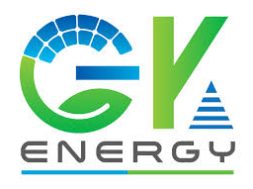
Announcing the scheme, chief minister Vijay Rupani said Gujarat is committed to take lead in clean energy generation and contribute 20% of the 175 GW renewable energy generation goal set by the Central government by next three years.
The Gujarat government has launched an incentive scheme for the micro, small and medium enterprises (MSMEs) to tap renewable energy under which these firms will be allowed to set up solar plants to cater to their entire power requirements and even sell excess solar power, if any, to the state electricity board at Rs 1.75 per unit. Solar power generation by these units have till now been capped to cater to a maximum of 50% of their power load.
Also, in case MSME units don’t have adequate own land to install solar panels, they would be allowed to generate solar power in rented land. However, they will have to pay electricity duty and wheeling charges as per the provision made in Solar Policy 2015. The state has set a target to have 30,000 MW renewable energy capacity by 2022 end.
Gujarat’s energy minister Saurabh Patel said: “The cap on 50% load capasolar city has been removed for MSMEs in case of solar power generation. With this, MSME units would be able to install 100% or even more capacity of solar panel. Additional power generated by these units would be purchased by state-owned electricity companies at Rs 1.75 per unit.”
Announcing the scheme, chief minister Vijay Rupani said Gujarat is committed to take lead in clean energy generation and contribute 20% of the 175 GW renewable energy generation goal set by the Central government by next three years.
“There are more than 33 lakh MSME units functioning in the state and taking advantage of this scheme, MSME units would save considerable amount on their electricity bills,” he said.
According to Rupani, Gujarat was aiming to use 20,000 MW renewable energy and the remaining 10,000 MW would be sold to other states once the target is to be achieved by 2022 end.
With 6,880 MW of wind power and 2,654 MW of solar power, Gujarat is one of the leading states in the renewable energy sector, with such units comprising 30% of total power generation capacity of the state.














